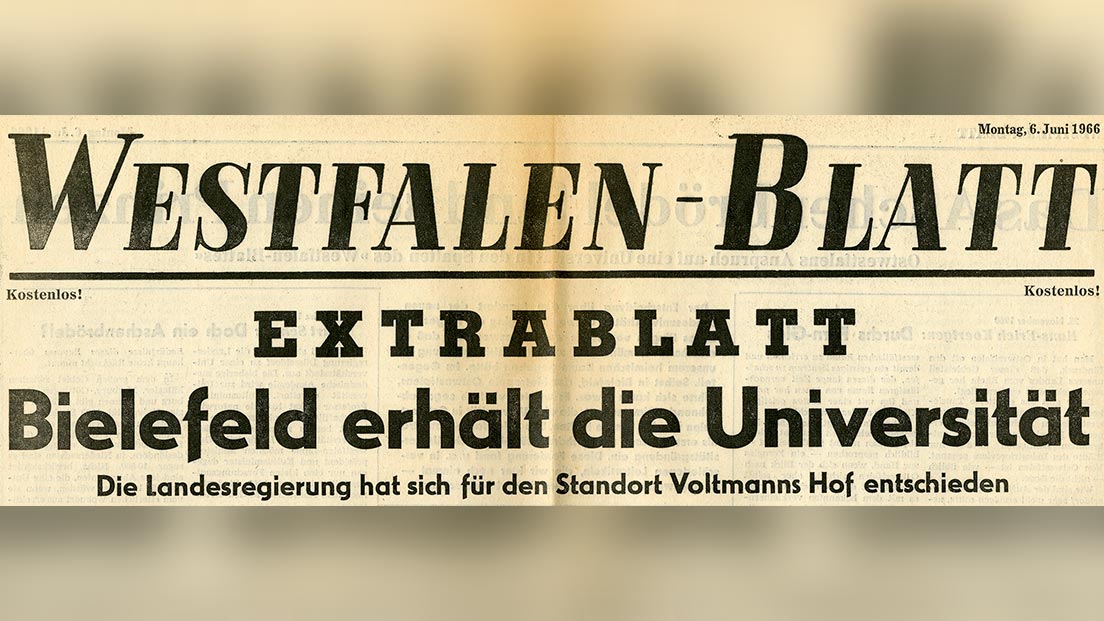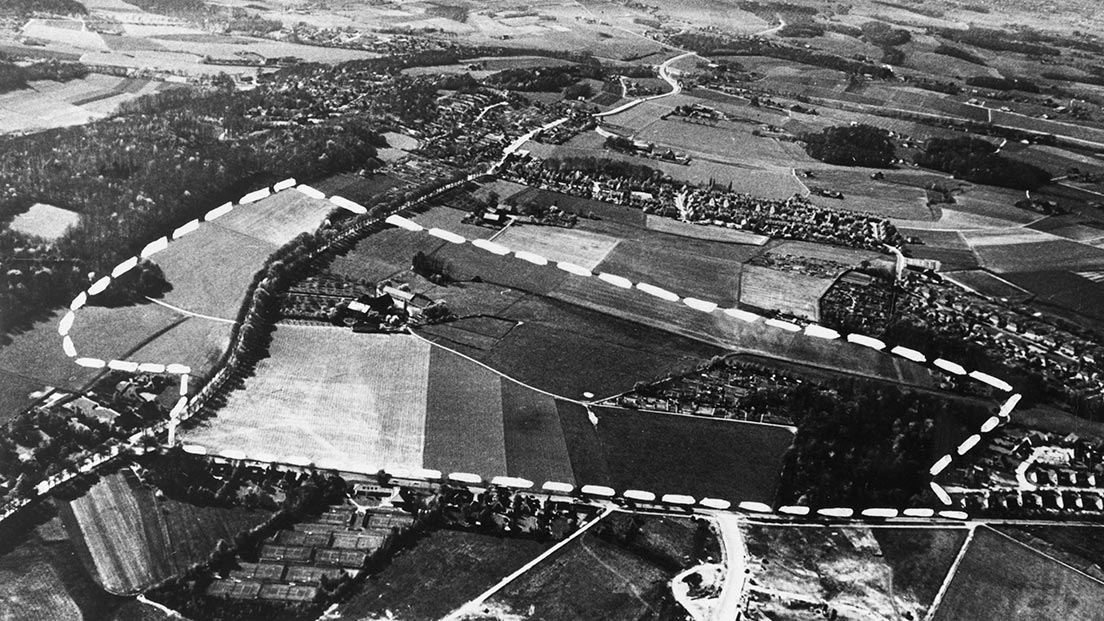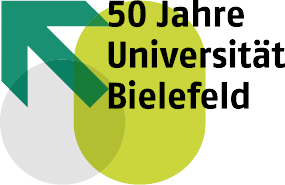
–
with the kind permission of the WESTFALEN-BLATT
As early as autumn 1965, there were growing signs that the largest city in East Westphalia, with a population of around 170,000, was ahead in the running to become the location for the University. Members of all parties in the state parliament had more or less directly spoken out in favour of Bielefeld. In addition, the site survey commissioned by the state government in August 1965 also clearly supported the location of the current University in Bielefeld-Großdornberg. Finally, the main actors of the newly founded university, Paul Mikat and Helmut Schelsky, made no secret of their preference for Bielefeld.
In the city of Bielefeld, an alliance formed between regional and national political actors, industry and organisations in favour of a university in Bielefeld. Armed with good arguments as well as economic, political and financial power, this alliance helped win against the competition from Herford, Detmold, and, in particular, Paderborn. Sometimes unconventional means were employed and bureaucracy was bypassed. Around the turn of the year 1965/66, the Westfälisch-Lippische Universitätsgesellschaft (University Society) was founded. Although officially it was “location-neutral”, the very composition of its governing bodies showed a clear tendency for Bielefeld.
–
Source: Universitätsarchiv Bielefeld, TDS 6
Bielefeld becomes a university town
The state government, however, took some time to make its official decision. It was only on Monday 6 June, 1966 that Minister President, Franz Meyers, announced at a press conference held in the cellar of the historic town hall that the new university was to be built on the Voltmannshof site in Bielefeld-Großdornberg. Following the afternoon press conference, the Westfalenblatt newspaper published a two-page, free special edition to inform the Bielefeld public.
The same article showed an aerial photograph of Bielefeld-Großdornberg with a line marking the boundary of the envisaged university grounds. To the left of the picture is the Voltmannshof, which still stands today and has housed the Internationales Begegnungszentrum der Wissenschaft IBZ (international guest house) since 1982. The 21 flats of the IBZ serve primarily as accommodation for visiting scholars of Bielefeld University and their families.

–
Photo: Günter Rudolf
Source: Universitätsarchiv Bielefeld FOS 01613
Uncertainty until property is purchased
At the end of 1965, the state government appeared to have already come to a decision in favour of Bielefeld-Großdornberg, according to a letter written by the ministerial director, Professor Wegner, to the DF group (building and property matters) in the Ministry of Culture, dated 2 December 1965. The government’s reticence to make it official was mainly due to an attempt to avoid property speculation. In a note dated 23 December 1965, Eberhard Freiherr von Medem, representative of the state government for organisational planning, writes about the progress made in the property negotiations with the Voltmann and Kleineberg families. On 21 April 1966, after lengthy and difficult negotiations, senior city director, Kuhn, representing the city of Bielefeld, finally reached an agreement with Katharina Voltmann on the purchase price of the Voltmannshof site and the conditions attached to the sale. Only after these negotiations were successfully concluded on 16 May 1966 and recorded in a local court, could the Bielefeld-Großdornberg location be officially confirmed in June 1966.

